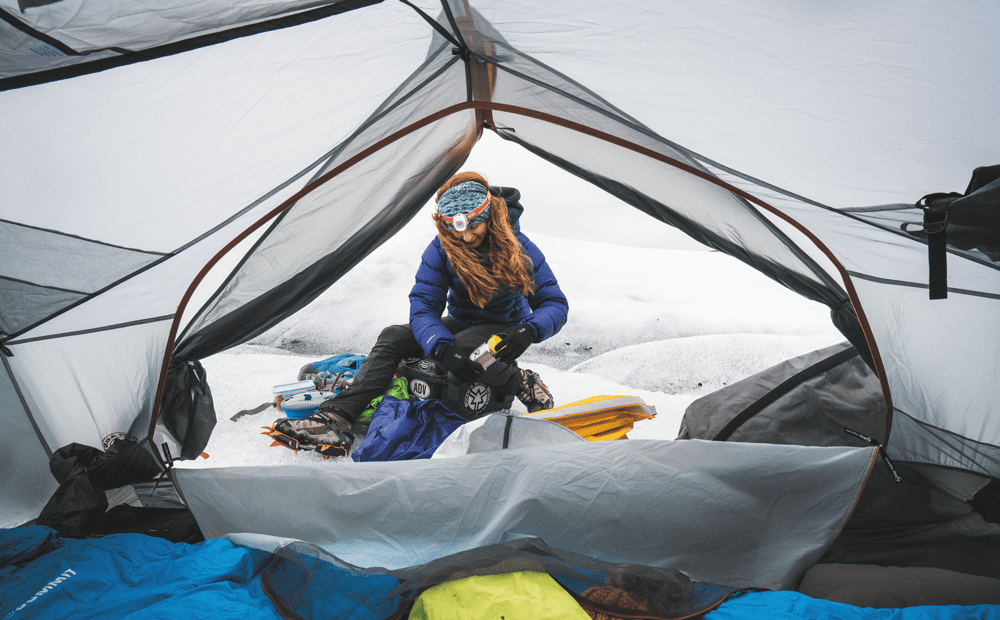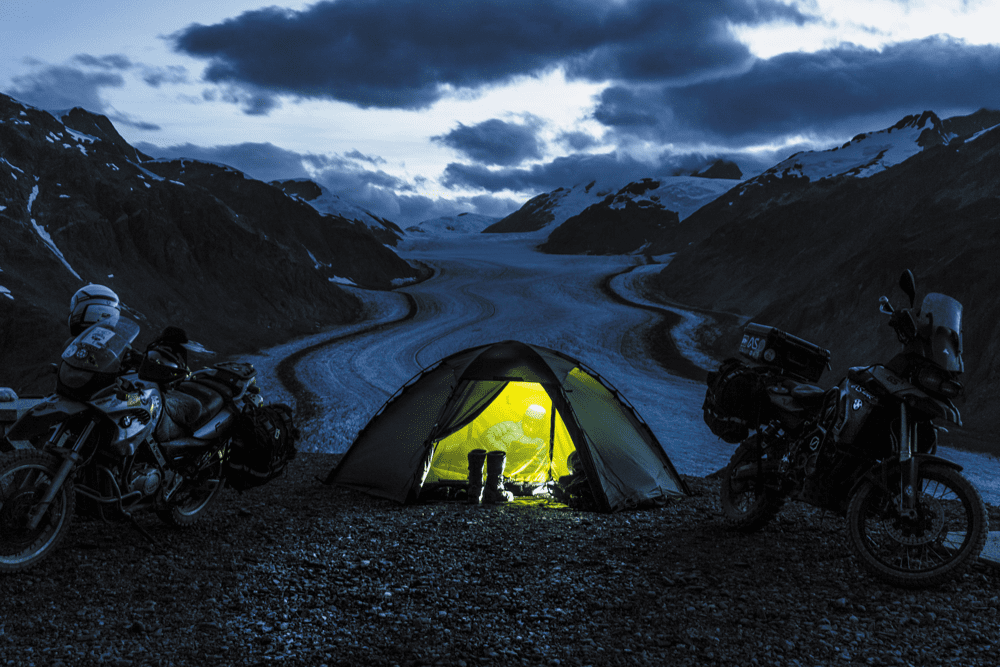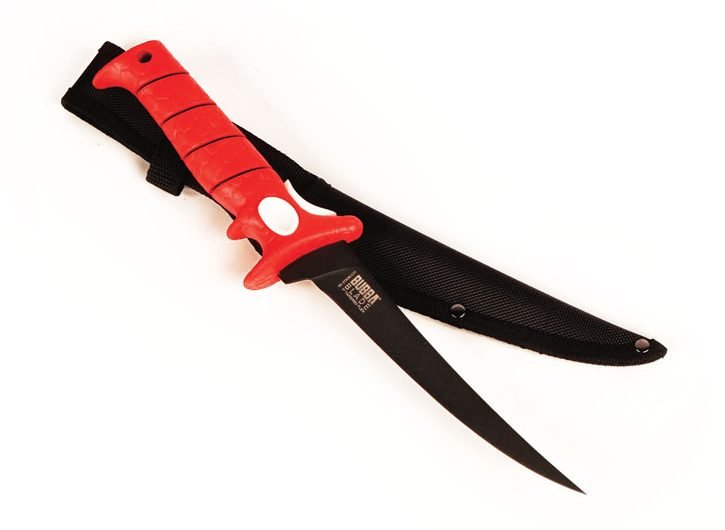Winter Camping Tips and Hacks

First Things First: Winter Camping Tips to Make Your Adventure Unforgettable
A little prep goes a long way: Sounds obvious, but before disappearing on a winter camping adventure, tell someone where you’re headed, determine what’s nearby (firewood, water, and local regulations), and gauge the distance to civilization on a detailed map. Uber-remote camping may warrant investing in a satellite communicator to send and receive texts with GPS coordinates worldwide (e.g. inReach).

Not exactly glamping on a glacier, but spending the night on Juneau Icefiels was an incredible first. (Mendenhall Glacier, southeast Alaska)
Tent TLC: Routinely protect your shelter with a waterproofing spray and air it out well after heavy rainfall to avoid moisture damage. Pack spare lanyard/guy lies, snow stakes, and a repair kit.
Ruck prep: All-terrain or winter tires on your 4WD’s sturdy wheels that work in conjunction with the suspension enhance capability through the technical terrain–making it safer.
First aid: Keep it well stocked and in date (e.g. LifeSystems). Add spare gloves, hand warmers, 50-SPF sunscreen, polarised sunglasses, and heat pads for the body.
Three items I have to bring: A Therm-a-Rest insulated sleeping mat, ski salopettes (warmer than rain pants), and an external battery pack.
Snug as a Bug
Making camp in the snow: A spot that’s shielded from the wind, damaged trees, and any avalanche risk. Preferably a pitch that exposes your sanctuary to the light at sunrise; it’ll bring welcome warmth.
Note nearby landmarks just in case and pin your GPS location.
For wicked winds and heavy snowfall, go four-season: Four-season tents have sturdier poles and more durable fabrics than lesser season tents so they can withstand gusting winds and snow dumps. They have less mesh to insulate better and extended rainflies to keep snow out. Ensure you can pitch your dome sweet dome with gloves on; same goes for your rooftop tent.
True to size: While it’s worth having ample room to stow your gear away from the elements, don’t opt for a six-person monster when there’s only two of you. It’ll never feel warm in your shelter.
Staying Warm Outside
Calorific dense dining: Winter camping gives you an excuse to consume high-energy food. Keep it simple with quick and nutritious one-pot meals.
Stay hydrated: Getting fed and watered helps circulate your blood and thus, stay warm. Drink plenty of fluids, which don’t have to be cold: cordial, herbal teas, and hot chocolate all count. Keep liquids in a double-walled bottle (e.g. Hydro Flask) to prevent freezing; the hoses on reservoirs can freeze in chilly temps, cutting off ready access to your water supply.
How to melt snow:
1. Scoop up clean, WHITE snow.
2. Get the stove lit.
3. Pour some water in the pot, then add snow (avoids scorching the snow, which leaves an aftertaste).
4. Add more, as desired.
5. Stow in an insulated bottle the night before, so you’re all set in the morning.
Quick cook system: It’s advisable to pack a backup stove should your primary fail, and spare fuel plus waterproof matches and an igniter in a zip-lock bag.
Go bush without freezing your tush: Layering is a three-part system. A practical ensemble comprises a merino wool base layer (wicks perspiration away from the skin); a hydrophobic down insulating layer (traps the air, superior warmth-to-weight ratio); and a Gore-Tex shell layer (keeps wind and moisture out). A waterproof parka, ski, or snow mobile wear would substitute the last two.
Thermal underpants to a parka: Waterproof insulated hats, gloves, neck gaiters, and boots bode well in a winter camper’s arsenal. As do long, heavyweight, wool socks and insulated knee-length rubber boots. Up to half of your body heat is lost through the head so keep that beanie on overnight or your sleeping bag hood cinched.
Staying Warm Inside
Stay dry: Anything that’s quick-dry and breathable but merino wool over cotton, and down over synthetic. Religiously change from your “wets” (the clothing in which you’re exerting) to your “drys” (a set of dry clothing to keep your core warm during rest periods). Overnight, pop hand warmers in your boots if they feel damp inside and wear the next day’s socks while sleeping.
Sleep mat-thematics: Line the rooftop tent’s floor area with self-adhesive insulation foam—even though you’re not on the ground, the cold from the ground in winter will steal every last vestige of body heat. Or use two insulated sleeping pads with a high R-value per person.
Stay cozy: Choose a sleeping bag appropriate to your size and the temperatures you’ll be snoozing in (shake well, so it’s full of air). Add a fleece liner if needed. It’s unwise to wear all your clothes when sleeping; you’ll have nothing to warm you up after peeling out of your snug cocoon. Refrain from burying your face in your sleeping bag; you’ll trap moisture inside, which will turn to condensation.
Take a comfort break: When Mother Nature’s doing her worst, carry 1.) travel-size hot water bottles. 2.) A Nalgene bottle for peeing in. Ladies: Consider accompanying the process with a SHEWEE. Resisting the “urge” exerts energy that could be used on your extremities. When nature calls, you should always answer.

Like the salmon itself, feeling spent after a long journey to get there. (Salmon Glacier, B.C.)
Winter Camping Hacks
Housekeeping: Mesh clothes organizers (e.g. Sea to Summit) and color-coded dry bags (e.g. SealLine) keep you sane when you need to grab an item quickly; the latter weather-seals your gear.
Universal items: Duct tape anything that looks like it could leak, pack a multi-tool, a snow shovel, and plenty of lighting.
Dental floss: It’s amazing what you can achieve with a needle and floss—a strong material to substitute sewing thread: pop a button back on, darn your socks and gloves, slice cheese, close holes in the tent, repair a backpack, fishing line alternative, hang items from a tree, make a clothesline.
Emergency supplies: Should you get caught out for any reason, pack some de-hy food. A raw nutty energy bar and homemade trail mix are good options.
Nothing burns like the cold: Frostbite and hypothermia are legitimate concerns while winter camping. Tucking fingers under your armpits or on a friend’s stomach are gleeful ways to warm up! Try the Swiss Army technique: Lock both arms straight and position your hands perpendicular to your arms. Assertively move both shoulders up and down, which sends blood down to your fingers.
We cannot live without: Our Motorhome WiFi 4G system. It gives us enhanced WiFi from the truck practically wherever we go, even in Iceland’s interior when there’s often fleeting signal. Among umpteen other reasons, we can constantly check the weather and conditions/accessibility of roads.
One item I wish we’d had from the start: Your face may pleat with pity that we went months in nippy temperatures without, but we eventually fitted a Webasto parking heater. It saves wasting pricey diesel, engine wear, and exhaust emissions. We would relish a USB/240V heater for the rooftop tent.
Pay it forward: Carry something to give away—you never know when you’ll need someone’s help. Beers, cookies, stickers … doesn’t matter—it breaks the ice and any language barriers.
Pack a big smile: An international friendly hello without having said a word. Being as approachable as humanly possible is number one when traveling through foreign lands.
Editor’s Note: A version of this article first appeared in the January/February 2020 print issue of Tread Magazine.



